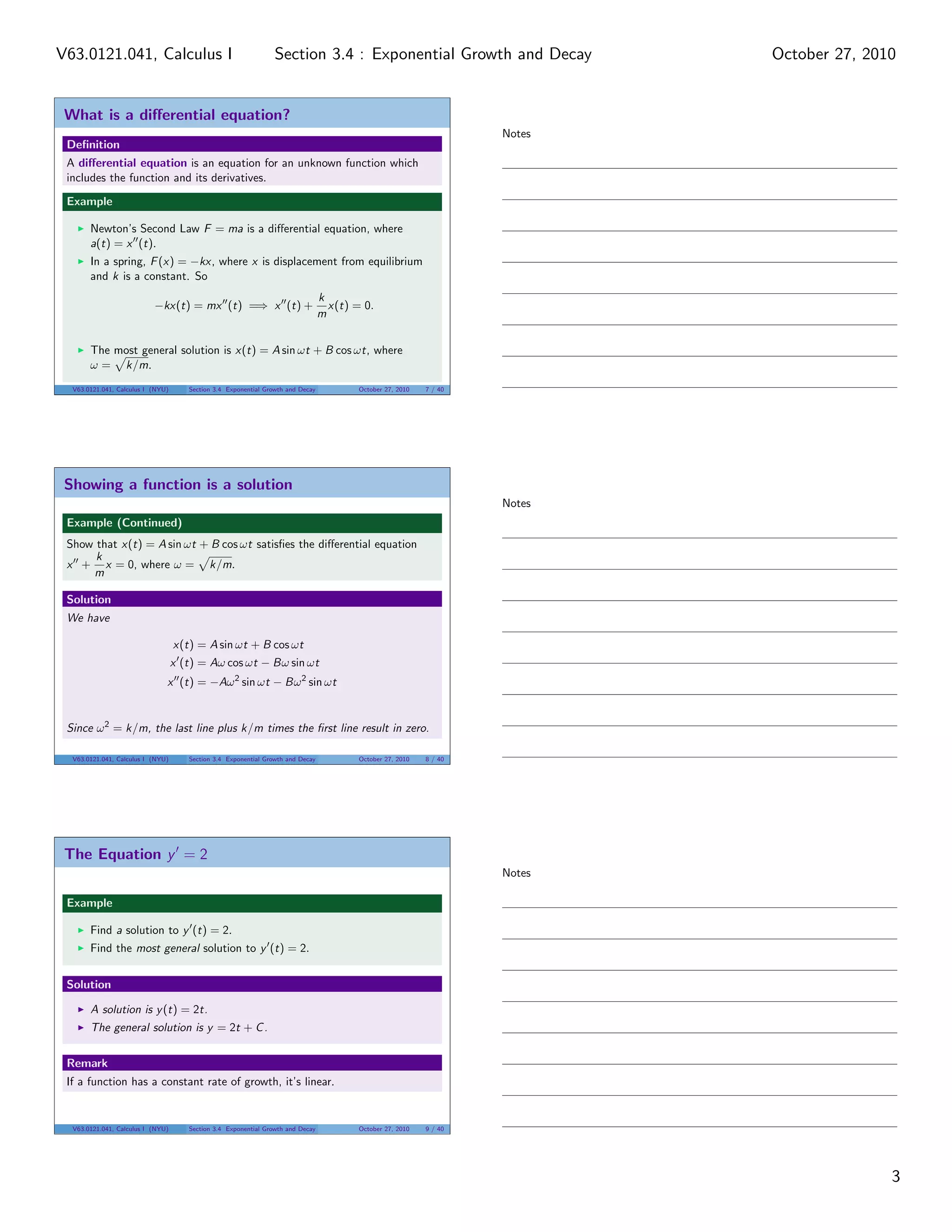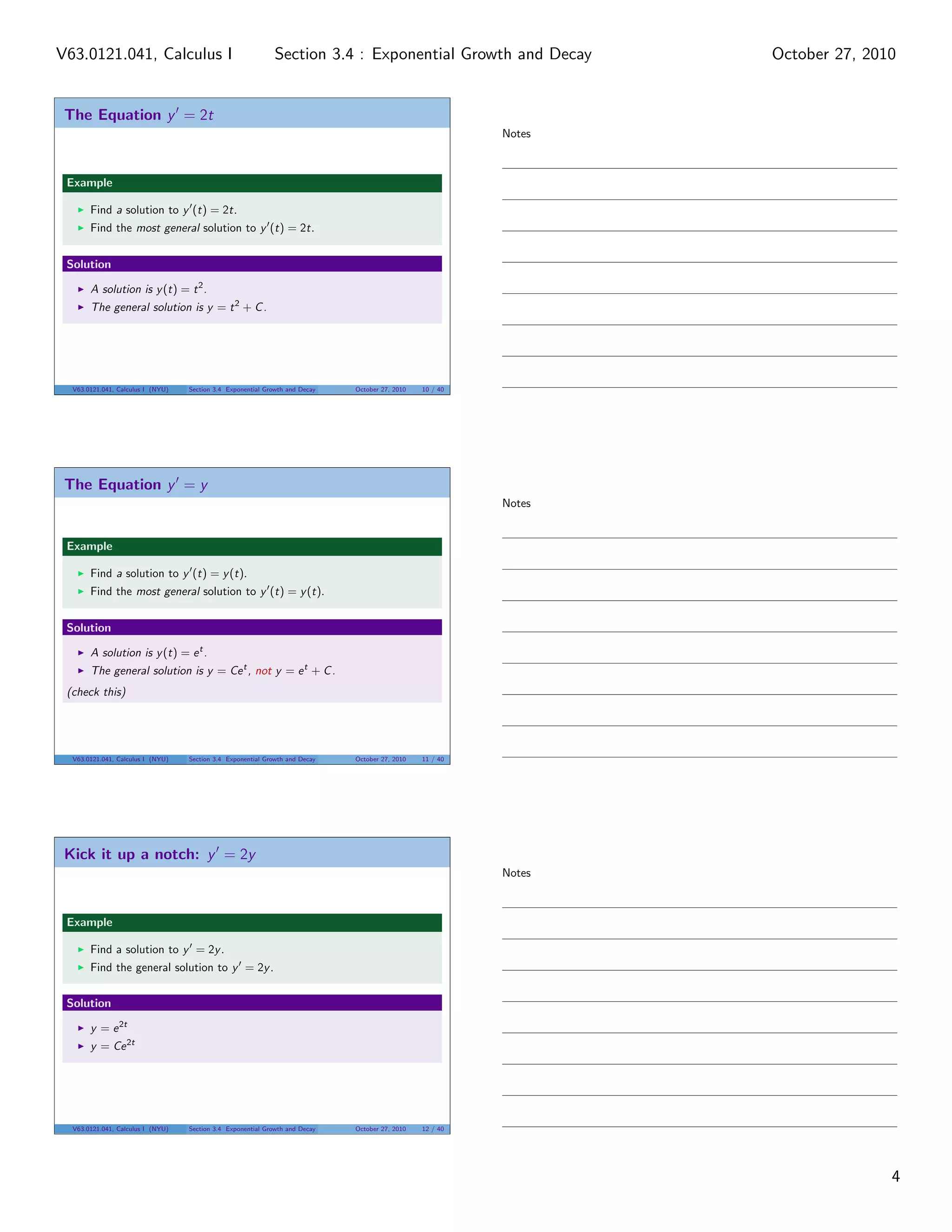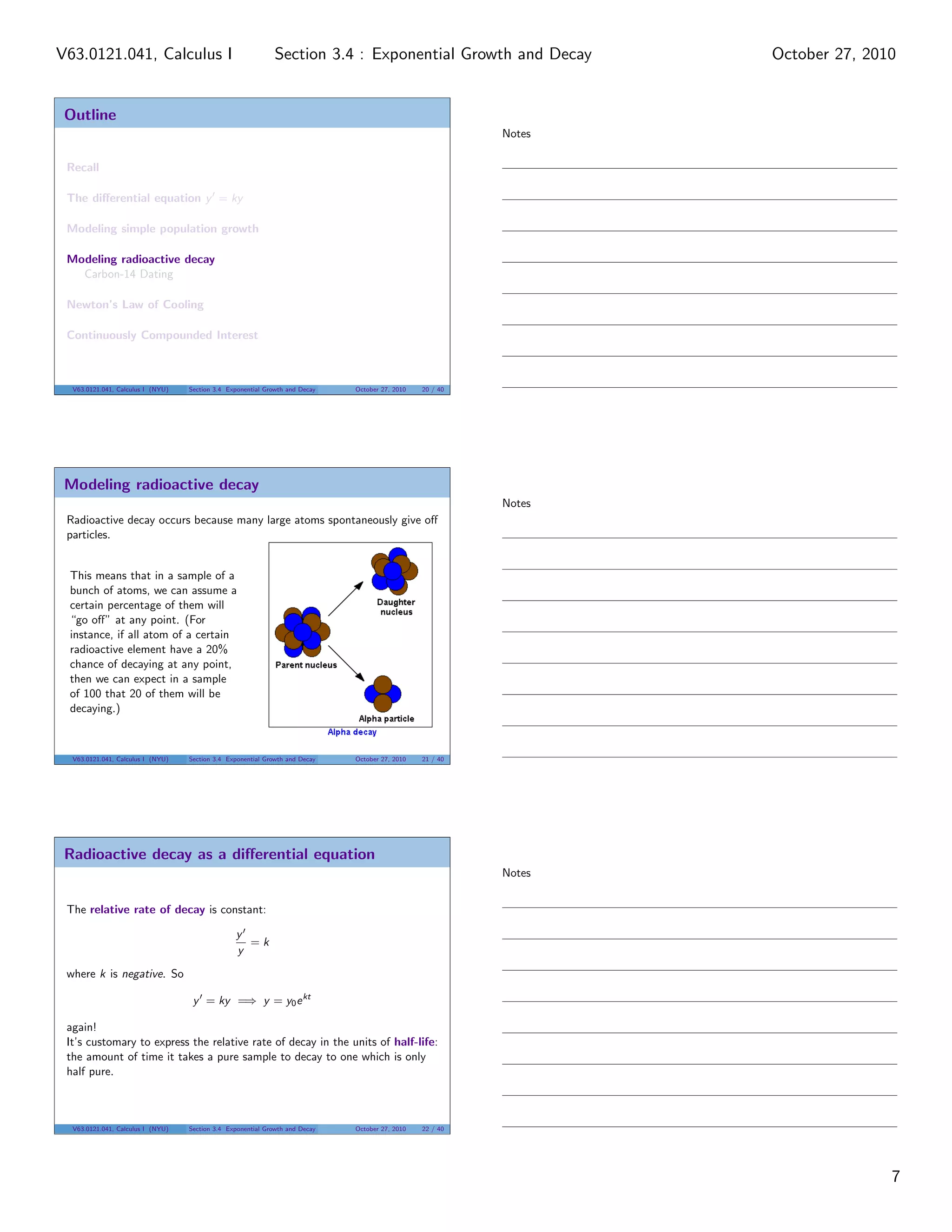This document covers section 3.4 on exponential growth and decay from a Calculus I course at NYU. It outlines key concepts, including differential equations, applications in population growth, radioactive decay, carbon-14 dating, Newton's law of cooling, and continuously compounded interest. Various examples and solutions are provided to illustrate how to solve problems related to these topics.












